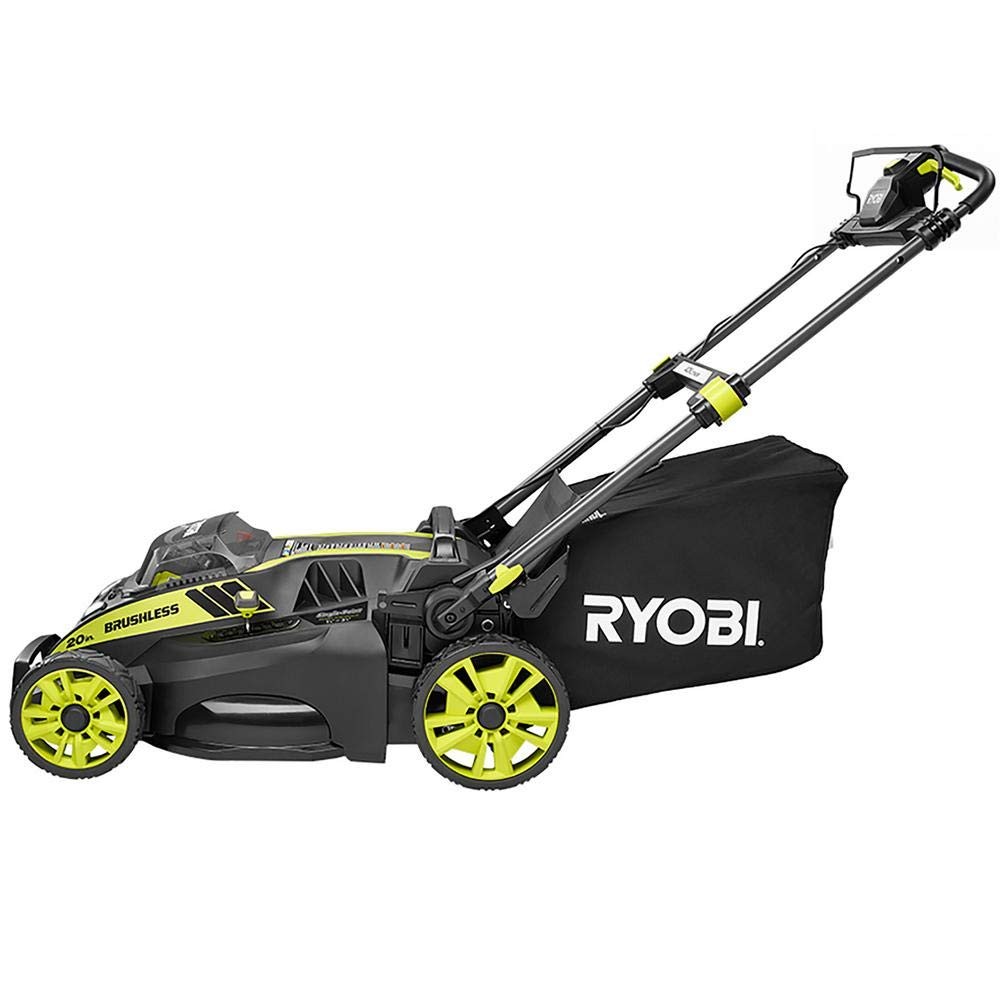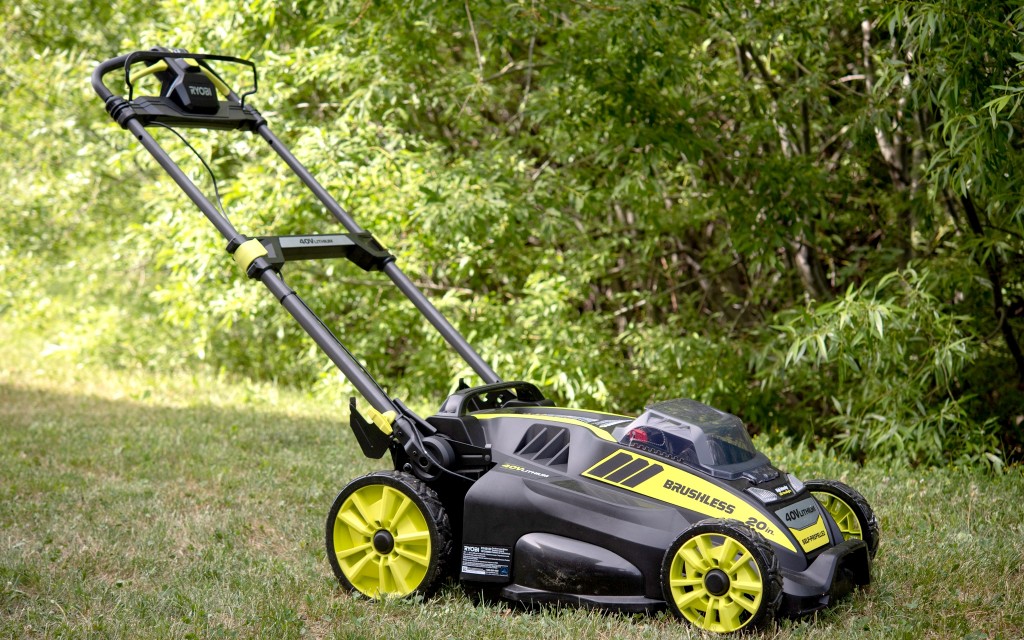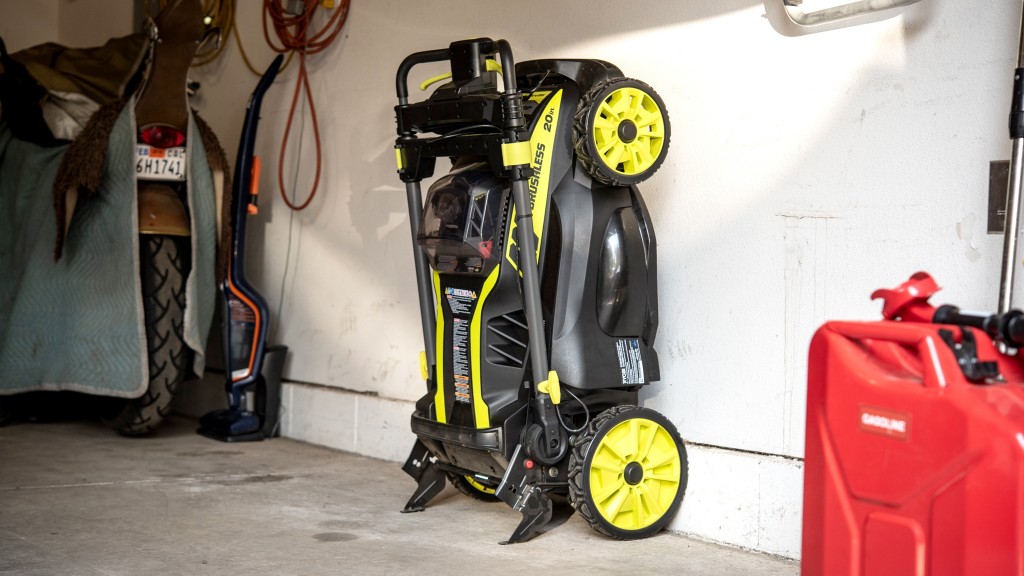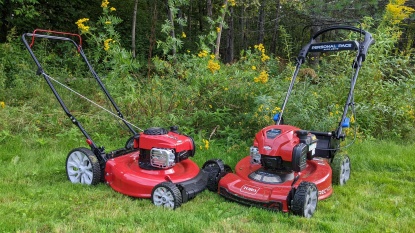Ryobi RY40190-Y Review
Our Verdict
Our Analysis and Test Results
The Ryobi is a high-performance mower that boasts self-propulsion, a powerful motor, a super-wide cutting deck, as well as an easy to use design. This machine is maneuverable, too. The battery powering this unit is the only real mark against it, though in truth, this model's battery performance is slightly above average. However, in light of its high-end performance in all other evaluations, it's battery comes off particularly poorly. That said, this machine offers a lot for the asking price.
Performance Comparison
Mowing
The most important feature in a lawn mower is it's mowing proficiency. Accordingly, we weight the mowing metric the heaviest at 35% of the product's total score. Our evaluation consists of a practical and a dimensional analysis. The practical analysis is an assessment of the motor's power as expressed by its ability to keep the blade spinning in shaggy grass and knee-high weeds while mulching. Next is our dimensional analysis, which consists of measuring the range of cutting-height adjustments and the cutting deck width.
We take a practical approach to measuring the cutting deck because we want that measurement to be representative of the maximum mowing width possible. Accordingly, our measurement is taken between the two front wheels to account for the overlap required to avoid leaving a strip of uncut turf between one row and the next. We also measure the cutting gap, which is the space between the end of the blade and the outside of the cutting deck. This gap is the main culprit in poor edging and in the overlap requirements discussed above.
The Ryobi is a leader in the mowing metric. This machine can cut grass at any height with little difficulty. With seven cutting-height settings between 1 1/2" and 3 13/16", the Ryobi can handle most grass species preferred trimming heights. At a width of 17", the cutting deck is one of the wider in the class. Additionally, this model has one of the narrowest cutting gaps making it great for edging. Thus, the mower will do more work in less time than many of its competitors.
Battery
After mowing proficiency, the battery metric — which is weighted to 25% of the final scoring — is the most important aspect of mower performance. The answer to why this is the case is simple: the battery powers the mower, and without it the mower is just a tacky lawn ornament. To get at what makes one battery better than another, we look at the runtime of the mower and the recharge time. Runtime is simply the amount of time that a mower's battery will continue to power a stationary mower with the blade spinning. Recharge time is, as the name implies, the interval required for a fully depleted battery to be completely recharged.
While recharge time is simple enough to understand, runtime requires a bit of explaining. One might wonder what a motionless mowers operation time has to do with mowing the lawn. We admit it's a bit counterintuitive. The problem lies in the efficiency of these mowers. To test a full class of mowers' battery life while mowing a lawn would take hundreds of thousands of square feet of grass. Grass that would need to be uniform as not to skew the results.
Finding, let alone cutting, this much grass is unrealistic. Our solution to this problem is math. We take the loadless runtime and plug it into a model that conservatively estimates the square footage that can be trimmed on a single battery charge. With an estimated 7,031 sq. ft. of cut grass on a single battery charge, the Ryobi does not fare so well compared to some of its peers. However, that is still the equivalent of mowing a lawn that is ~84' on a side. Not terrible, but still a poor showing for the class. Worse yet, is the model's prolonged battery recharge time of 4 hours, 10 minutes.
Handling
These lawn mowers are not hotrods. However, like hotrods, the ease in which the user can direct and maneuver them is quite important to the overall experience. As such, we weight the handling metric to account for 25% of the overall score allotted to a product.
Our analysis of mower handling looks at the starting mechanism with the primary concern being how easy it is to start the machine. We then evaluate the maneuverability of the mower — focusing on how it negotiates corners and tight spots. We also take stock of the mower's propulsion method. This could be self-propelled or human-powered. Either way, we want to know how easy it is to push the mower around. Finally, we evaluate the starting mechanism and the bail. While a simple feature like the bail might seem insignificant, it in fact can be quite uncomfortable to grip if the spring that disengages the blade is too stiff or it has a weird shape.
The Ryobi starts with little trouble, but it does have a bit of a leg that, at first, had us wondering what was going on under the hood. As it turns out, this delay is consistent and is just how this machine operates. Despite the broad cutting deck width, this self-propelled machine is quite maneuverable. It does well in tricky spots and corners, which complement its superior edging capability discussed above. Finally, the bail is one of the better designs that we have seen. It's both easy and comfortable to hold down.
Ease of Use
Ease of use is our mop-up metric that captures the little details that are less important than, say, how well the mower mows, but become more important to the user over time. Our focus of this metric is on the mower's folding mechanism, the position and usefulness of the battery life indicator, the effectiveness of the battery release mechanism, and finally, the noisiness of the engine. Due to the lower priority of these features, we weight this metric to account for 15% of the total product score.
The Ryobi delivers mediocre results in this evaluation. It's not that this machine is difficult to use, it's just that some of its competitors fleshed out these details to better effect. Take the storage folding mechanism as an example. While the model folds up compactly, depending on the cutting height one has the deck set to, one might have to readjust this to get the handle fully folded. Another minor issue is the battery life meter. This useful feature is hidden under the battery cover and is not visible from the cockpit of the mower. That said, the removal of the battery is super simple and effective. Additionally, at 71 dBA, this is one of the quieter machines that we've tested.
Value
When you get more than you paid for in a purchase, we call that value. The Ryobi RY40190-Y fits this definition to a T. Sure, the mower has some shortcomings in the ease of use and battery metrics, but these fall away when compared to the mowing performance and handling. When compared to its competitors, purchasing a mower with the Ryobi's level of performance usually costs quite a bit more money.
Conclusion
The Ryobi is well-deserving of the accolades heaped on it for its affordability. It offers considerable performance in mowing and handling outweigh its limited battery life and so-so secondary features. If you have a small to medium-sized lawn, perhaps one with an unusual shape requiring tight edging, then you can't go wrong with this machine. As a bonus, you can throw a couple of barbeques for your neighbors with the money you saved.








